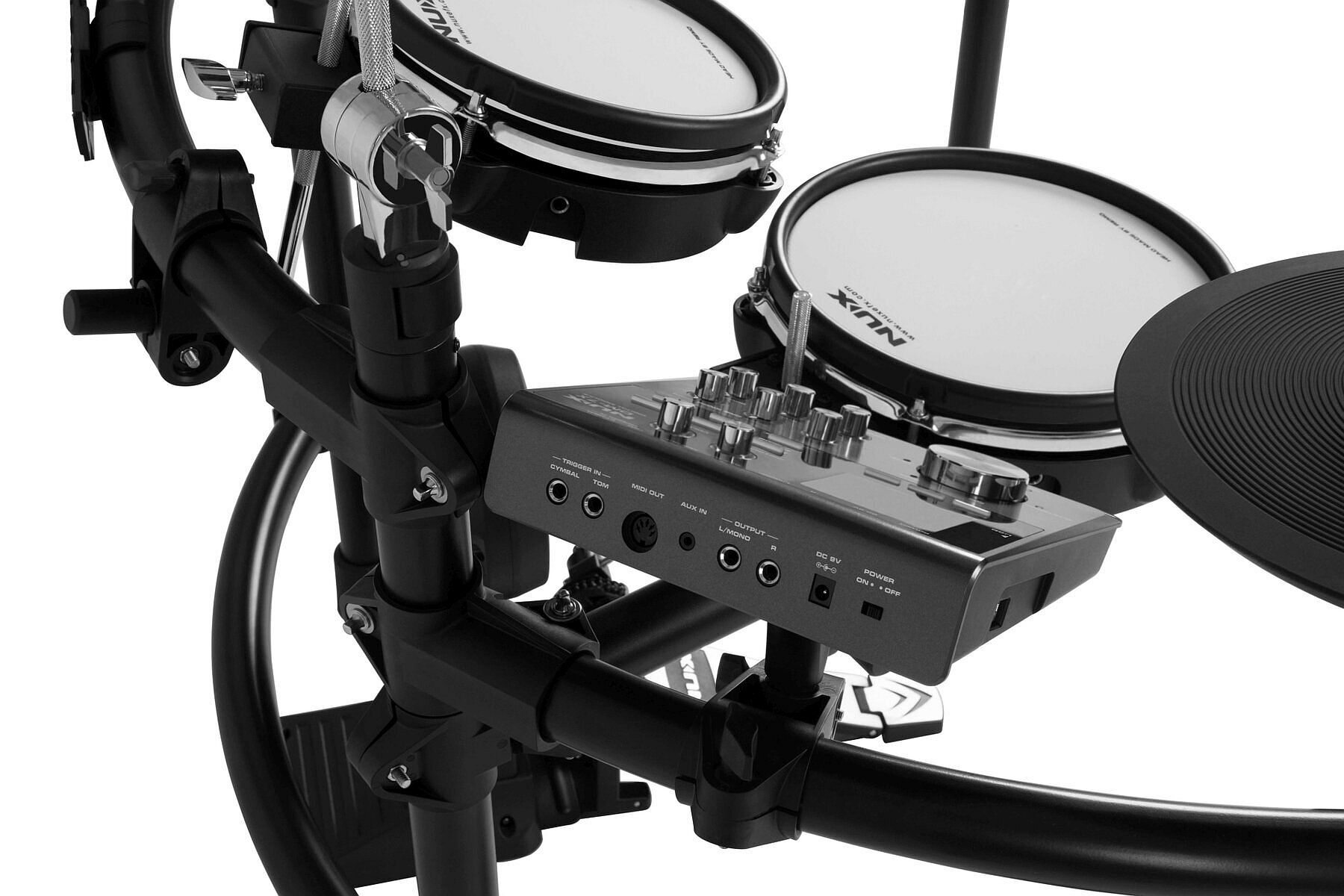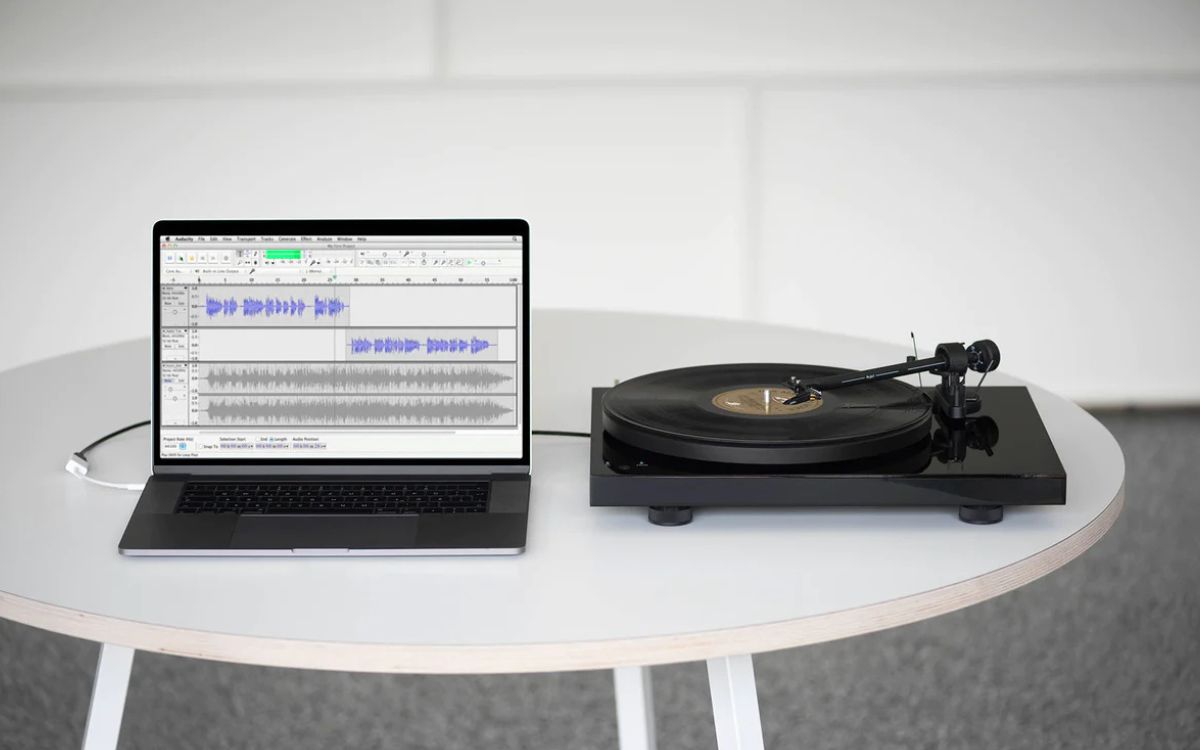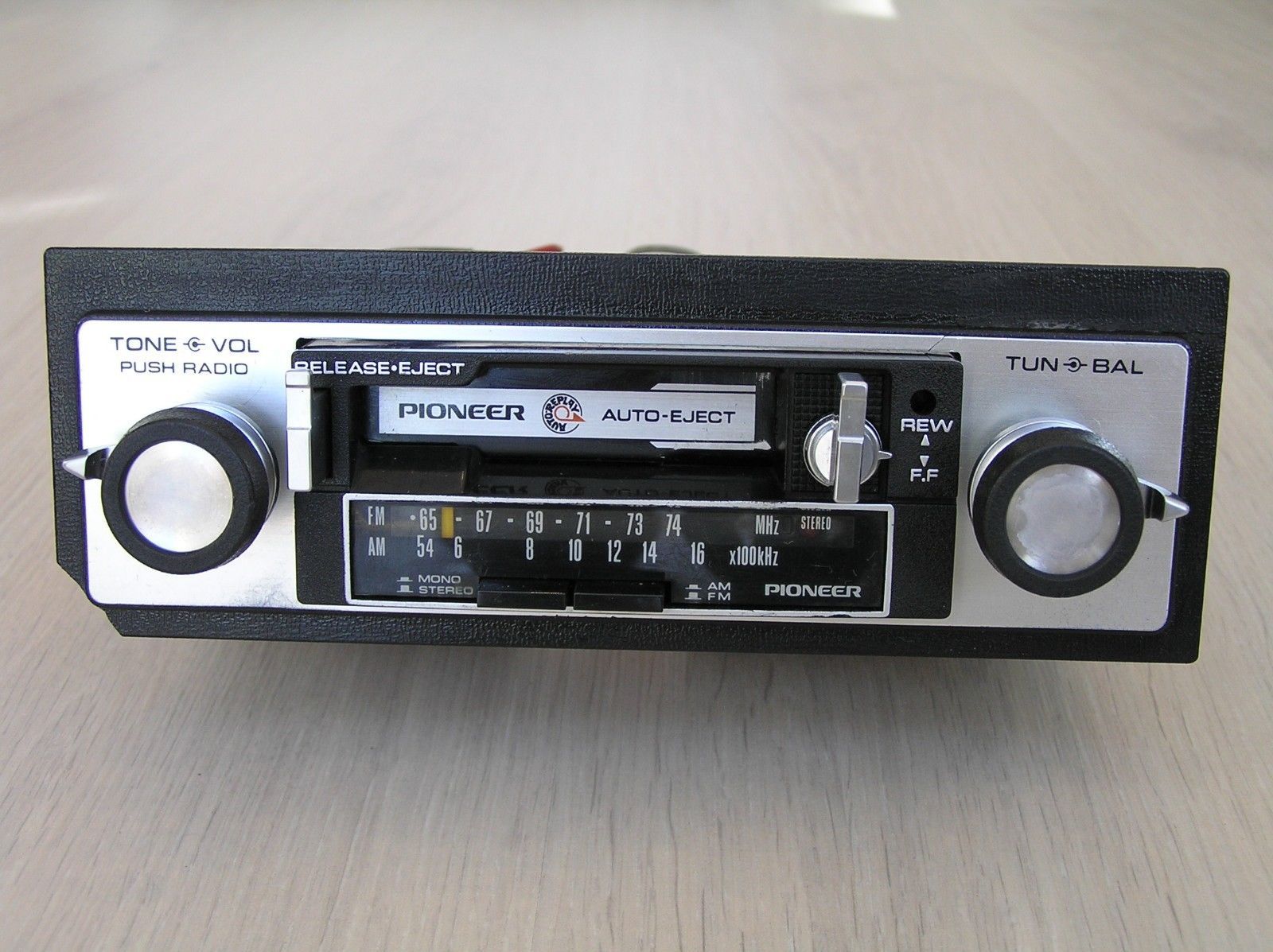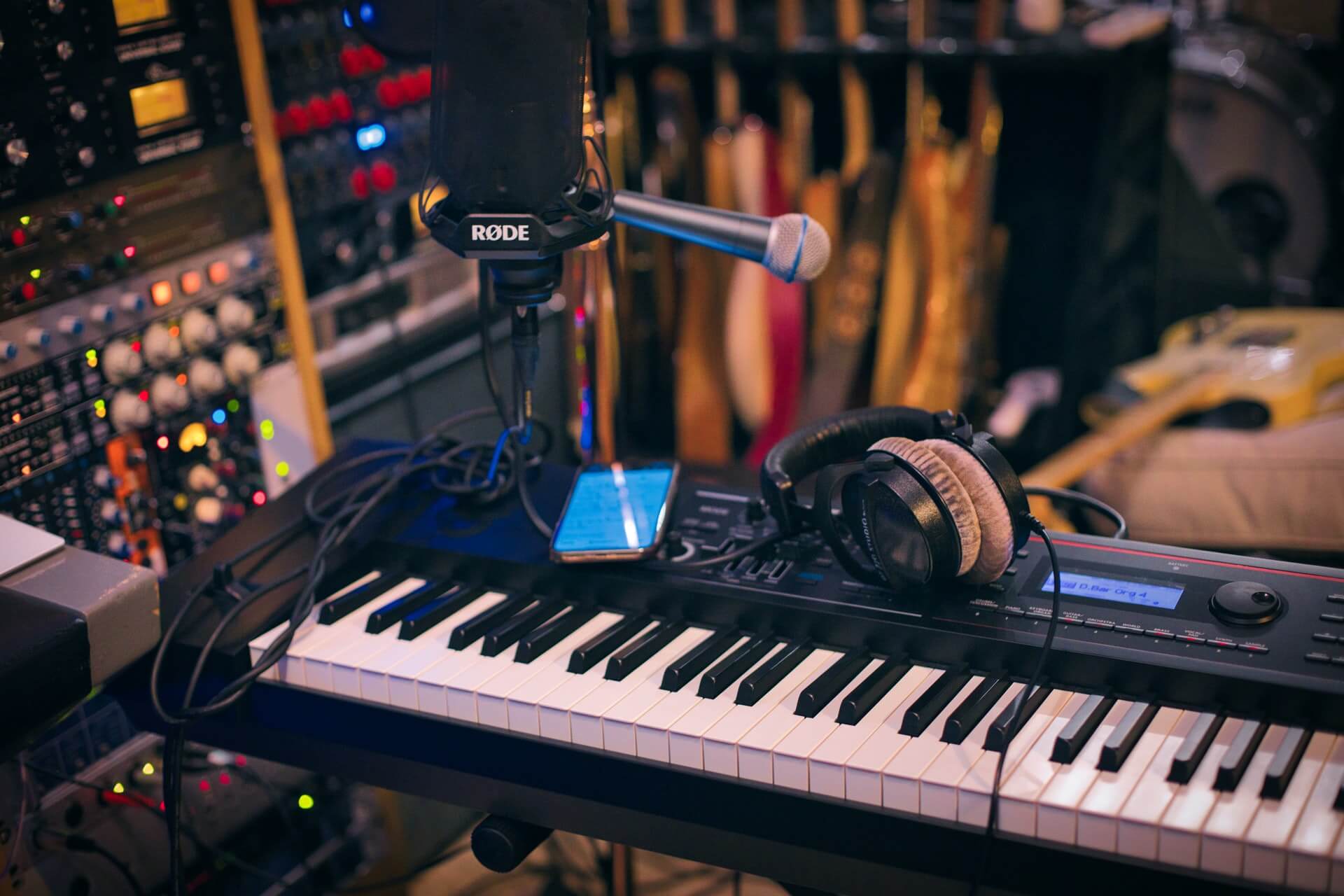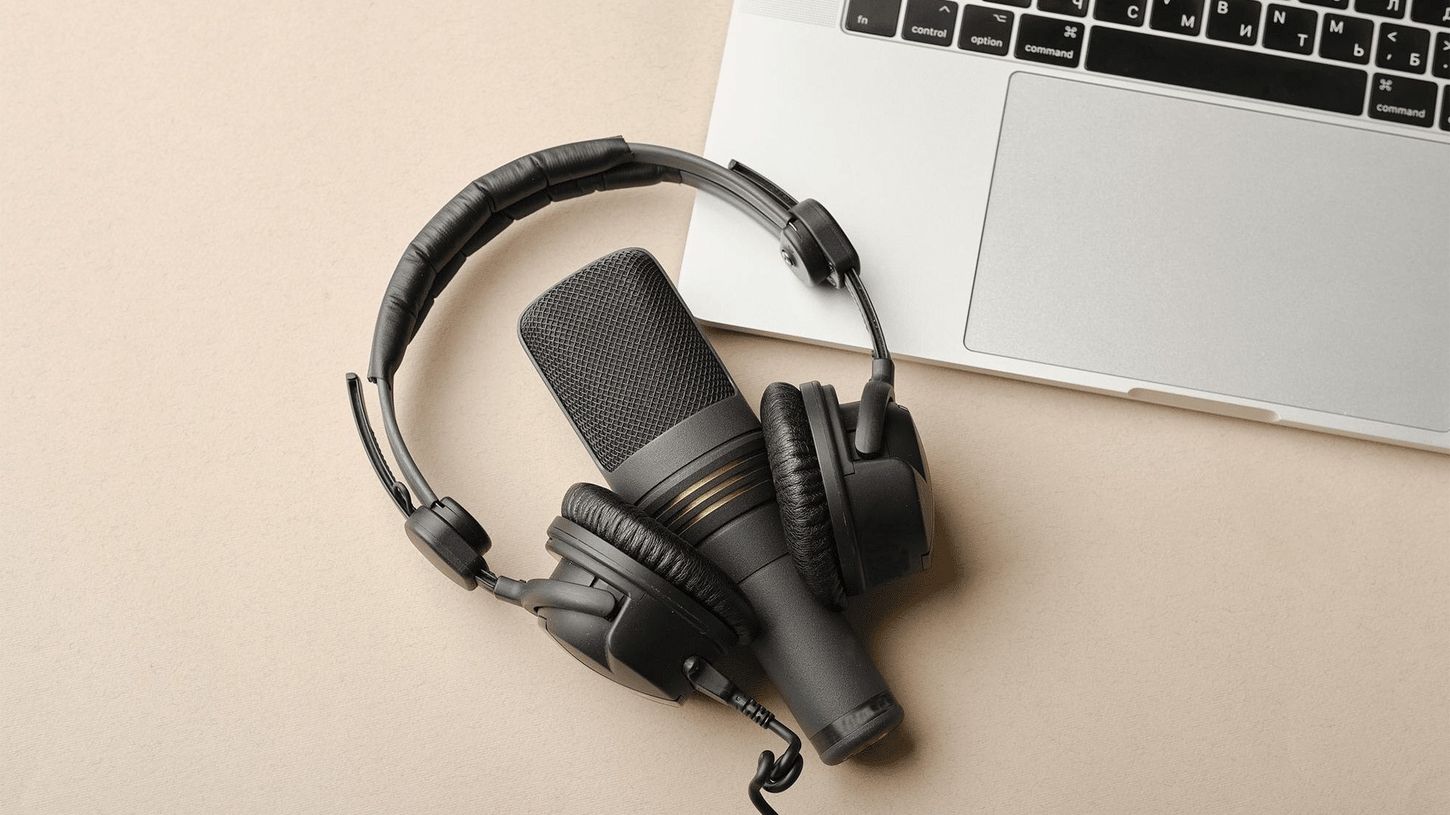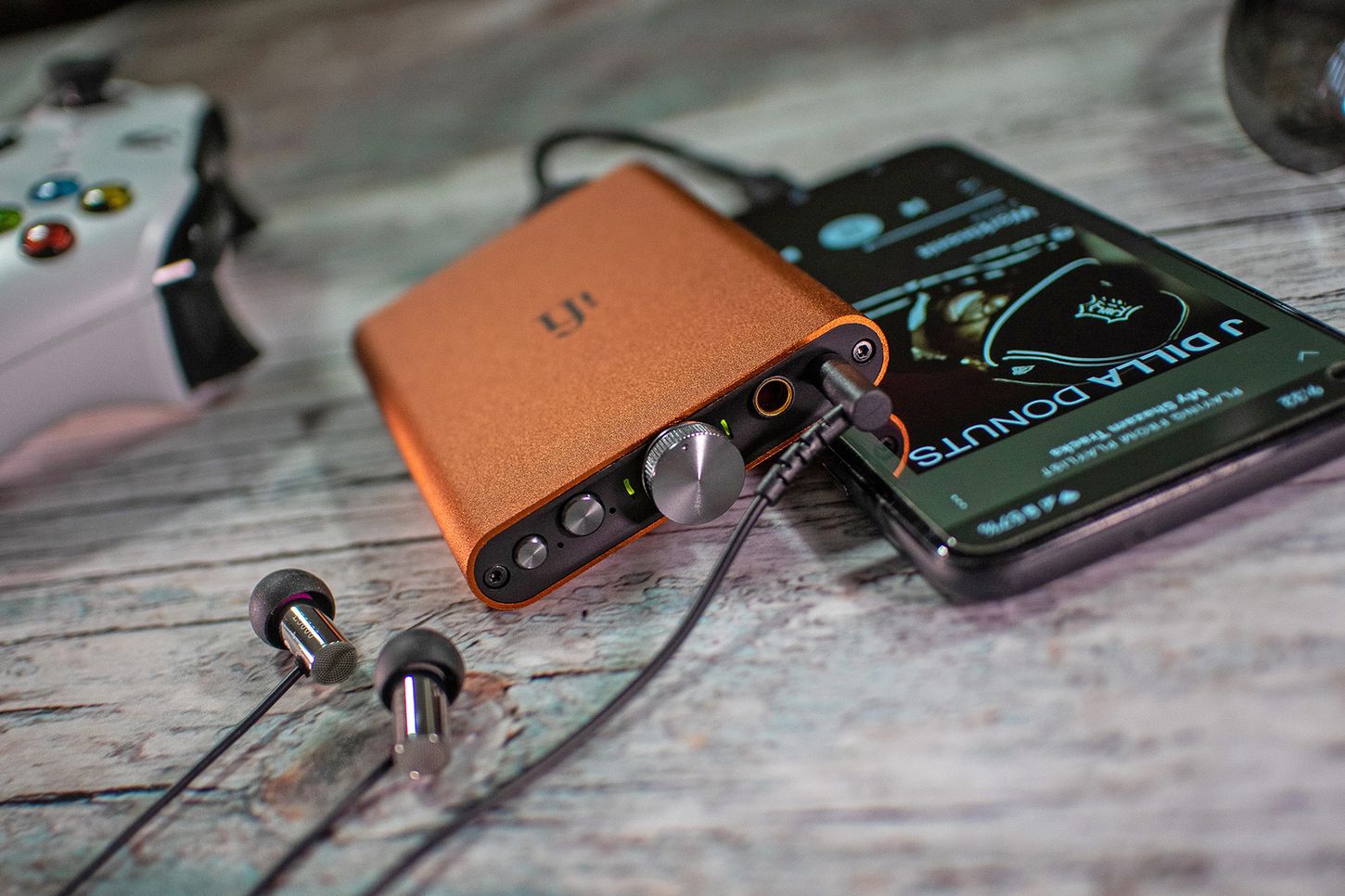Home>Production & Technology>Digital>How To Transfer Digital Music To A Cassette
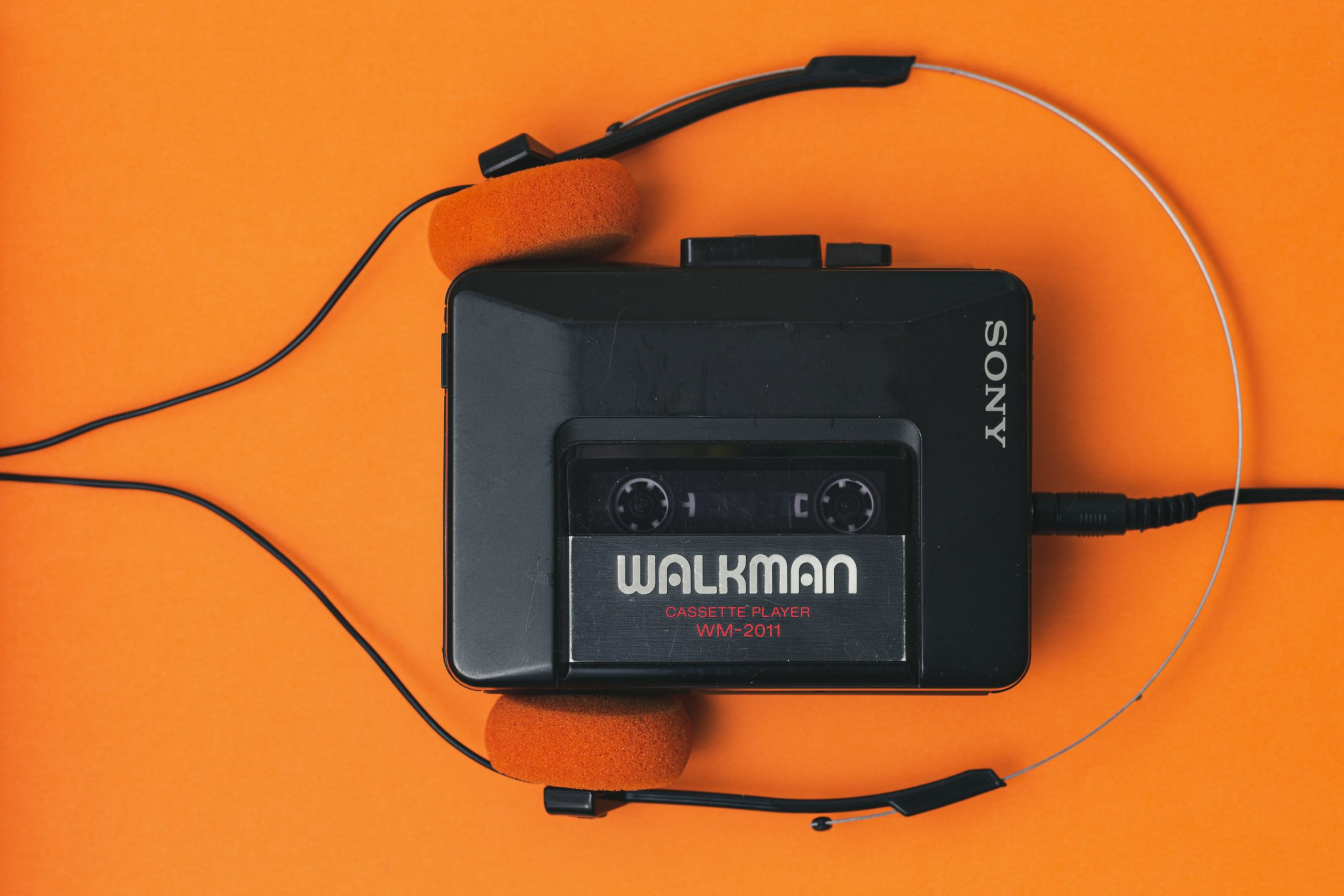

Digital
How To Transfer Digital Music To A Cassette
Published: March 10, 2024
Learn how to transfer digital music to a cassette with our step-by-step guide. Preserve your favorite tunes in analog format and enjoy the nostalgic sound. Discover the best methods for creating your own mixtapes.
(Many of the links in this article redirect to a specific reviewed product. Your purchase of these products through affiliate links helps to generate commission for AudioLover.com, at no extra cost. Learn more)
Table of Contents
Introduction
In today's digital age, the resurgence of analog technology has sparked a wave of nostalgia among music enthusiasts. While streaming services and digital downloads dominate the music consumption landscape, many individuals still hold a deep appreciation for the warm, authentic sound of analog formats. One such format that has experienced a revival in recent years is the cassette tape.
Transferring digital music to a cassette tape allows music lovers to enjoy the convenience of digital files while relishing the vintage charm of cassette playback. Whether you're a dedicated audiophile or simply seeking a unique way to experience your favorite tunes, the process of transferring digital music to a cassette can be a rewarding endeavor.
In this comprehensive guide, we will explore the step-by-step process of transferring digital music to a cassette tape. From gathering the necessary materials to fine-tuning the recording process, you will gain valuable insights into preserving the timeless appeal of cassette tapes in the digital era. By following these instructions, you can embark on a journey that seamlessly blends modern technology with classic audio playback, resulting in a truly immersive musical experience.
As we delve into each step of the process, you will discover the intricate art of bridging the digital and analog realms of music. Whether you're a seasoned audio enthusiast or a newcomer to the world of cassette tapes, this guide will equip you with the knowledge and skills needed to embark on your own musical odyssey. So, grab your favorite digital tracks and prepare to embark on a captivating journey that celebrates the enduring allure of cassette tapes.
Step 1: Gather Your Materials
Before embarking on the process of transferring digital music to a cassette tape, it is essential to gather the necessary materials to ensure a seamless and successful recording experience. By assembling the right tools and equipment, you can lay a solid foundation for capturing the essence of your digital music in analog form.
Here's what you'll need:
-
Computer or Audio Device: Begin by ensuring that you have access to a computer or audio device capable of playing digital music files. Whether you prefer to use a laptop, desktop computer, or a dedicated audio player, having a reliable source for your digital music is crucial.
-
Cassette Deck or Recorder: To record your digital music onto a cassette tape, you will need a cassette deck or recorder. This can be a standalone cassette deck or a portable recorder equipped with cassette recording capabilities. Ensure that the device is in good working condition and has the necessary inputs for connecting to your computer or audio source.
-
Blank Cassette Tapes: Acquire a supply of blank cassette tapes suitable for recording. Consider the length of your digital music playlist and select cassette tapes with an appropriate recording capacity. Whether you opt for standard Type I tapes or high-quality Type II or Type IV tapes, choosing the right cassette type can significantly impact the audio fidelity of your recordings.
-
Audio Cables: Select high-quality audio cables to establish the connection between your computer or audio device and the cassette deck. Depending on the input/output options available on your devices, you may need RCA cables, 3.5mm audio cables, or other compatible connectors to facilitate the audio signal transfer.
-
Recording Software (Optional): If you plan to digitize your music before transferring it to cassette, consider using recording software on your computer to capture and organize your digital music files. This step can streamline the process and allow for precise track selection and editing before the analog recording stage.
By gathering these essential materials, you will be well-prepared to initiate the process of transferring digital music to a cassette tape. With a clear understanding of the tools at your disposal, you can proceed to the next step with confidence and enthusiasm, ready to embark on a captivating journey that celebrates the timeless allure of cassette tapes.
Step 2: Connect Your Devices
Once you have gathered the necessary materials, the next crucial step in transferring digital music to a cassette tape is to establish the connections between your devices. This process involves linking your computer or audio source to the cassette deck or recorder, ensuring a seamless flow of audio signals for the recording process.
Connecting the Audio Source to the Cassette Deck
-
Identify Audio Outputs: Begin by identifying the audio output ports on your computer or audio device. These may include headphone jacks, line outputs, or digital audio interfaces, depending on the specific hardware you are using.
-
Select the Appropriate Cable: Choose the appropriate audio cable based on the output ports of your audio source and the input options on the cassette deck. For instance, if your computer has a 3.5mm headphone jack and the cassette deck features RCA input jacks, you will need a 3.5mm to RCA audio cable to establish the connection.
-
Establish the Connection: Carefully plug one end of the audio cable into the audio output port of your computer or audio device. Then, connect the other end of the cable to the corresponding input on the cassette deck, ensuring a secure and stable connection.
Configuring Input Settings
-
Select the Input Source: On the cassette deck or recorder, select the appropriate input source that corresponds to the connected audio cable. This step ensures that the device recognizes the incoming audio signal from your computer or audio source.
-
Adjust Input Levels: Depending on the features of your cassette deck, you may have the option to adjust input levels to optimize the audio signal for recording. Carefully monitor the input level indicators and make adjustments as needed to prevent distortion or signal clipping during the recording process.
Verifying the Connection
-
Test the Audio Signal: Play a brief segment of your digital music on the computer or audio device to verify that the audio signal is successfully reaching the cassette deck. Listen for any potential issues such as static, interference, or low volume, and troubleshoot as necessary to ensure a clean and robust audio signal.
-
Monitor Playback: If your cassette deck features a monitoring function, use headphones or connected speakers to monitor the playback of the audio signal from your computer or audio source. This step allows you to confirm the quality and fidelity of the audio signal before proceeding with the recording process.
By meticulously connecting your devices and verifying the audio signal flow, you can lay a solid foundation for the subsequent steps in transferring digital music to a cassette tape. With the connections in place and the audio signal primed for recording, you are poised to embark on the next phase of this captivating journey, where the digital and analog realms converge to create a harmonious fusion of musical expression.
Step 3: Set Up Your Recording Software
In the digital age, the integration of recording software into the process of transferring digital music to a cassette tape offers a myriad of benefits, including enhanced control over track selection, audio quality optimization, and the ability to create seamless transitions between songs. By leveraging recording software on your computer, you can streamline the digitization of your music collection and prepare the audio files for the analog recording stage with precision and finesse.
Choosing the Right Software
When selecting recording software for digitizing your music, consider options that offer intuitive interfaces, robust audio editing capabilities, and support for various file formats. Popular digital audio workstations (DAWs) such as Audacity, Adobe Audition, and GarageBand provide versatile tools for capturing, editing, and organizing digital music files, empowering you to tailor the audio output to your preferences before transferring it to cassette.
Digitizing Your Music
Before initiating the recording process, import your digital music files into the recording software. Organize your playlist, arrange the tracks in the desired sequence, and utilize the software's editing features to fine-tune the audio, adjust volume levels, and apply any necessary audio enhancements. This stage allows you to curate a cohesive and personalized musical experience, ensuring that each track is optimized for analog recording onto the cassette tape.
Track Segmentation and Editing
Recording software enables you to divide your music into individual tracks, facilitating seamless transitions between songs and precise control over the recording process. Utilize the software's editing tools to trim audio segments, remove unwanted gaps or intros, and apply fade-ins or fade-outs to create a fluid and uninterrupted playback experience on the cassette tape. By refining the structure of your music collection, you can tailor the analog recording to reflect your artistic vision and musical preferences.
Exporting to Analog Format
Once you have meticulously prepared and edited your digital music within the recording software, export the audio files to a format compatible with the cassette deck or recorder. Common export options include WAV or AIFF formats, which maintain high-fidelity audio quality suitable for analog recording. Ensure that the exported files are organized and labeled according to your desired track order, simplifying the process of transferring them to the cassette tape.
By integrating recording software into the workflow of transferring digital music to a cassette tape, you can elevate the entire process to new heights of creativity and precision. The seamless synergy between digital and analog technologies empowers you to craft a captivating musical journey that transcends the boundaries of time and technology, celebrating the enduring appeal of cassette tapes in the modern era.
Step 4: Start the Recording Process
With your devices connected and the digital music meticulously prepared, you are now poised to embark on the pivotal stage of the process: initiating the recording. This step marks the seamless convergence of the digital and analog realms, where the intangible essence of digital music is transmuted into the tangible allure of a cassette tape.
Setting Recording Levels
Before commencing the recording, it is crucial to ensure that the recording levels are optimized to capture the full dynamic range of the digital music. Adjust the input levels on the cassette deck or recorder, aiming to attain a balanced and robust audio signal without risking distortion. Carefully monitor the input level indicators, striving to achieve an optimal balance that preserves the nuances and intricacies of the music.
Commencing the Recording
With the recording levels set, initiate the recording process on the cassette deck or recorder. Simultaneously start the playback of the digitized music from your computer or audio source. As the audio signal flows from the digital domain to the analog realm, immerse yourself in the captivating transformation taking place, where the ethereal melodies and rhythms of digital music are transcribed onto the magnetic tape with a sense of timeless elegance.
Monitoring the Progress
Throughout the recording process, maintain a vigilant eye on the cassette deck or recorder, ensuring that the audio signal is faithfully captured without any technical anomalies or interruptions. Monitor the playback levels, verifying that the recording remains consistent and free from unexpected fluctuations. This attentive oversight safeguards the integrity of the recording, preserving the essence of the digital music in its transition to the analog medium.
Embracing the Analog Experience
As the recording unfolds, embrace the unique charm of the analog recording process. Revel in the subtle imperfections and idiosyncrasies inherent to cassette tapes, recognizing that these nuances contribute to the tape's distinct character and allure. The gentle whir of the cassette mechanism and the soft hiss of the magnetic tape serve as a testament to the enduring legacy of analog audio, infusing the recording process with a sense of nostalgia and authenticity.
Capturing the Essence
As the final notes of each track are transcribed onto the cassette tape, savor the culmination of the recording process. Each moment captured on the tape encapsulates the essence of the digital music, immortalizing it in a tangible and evocative form. With each passing minute, the tape becomes a vessel of musical expression, embodying the fusion of digital innovation and analog tradition in a harmonious symphony of sound.
By meticulously navigating the intricacies of the recording process, you have successfully bridged the realms of digital and analog music, breathing new life into the timeless allure of cassette tapes. The culmination of this step marks a profound achievement, as the intangible beauty of digital music finds a tangible home within the magnetic confines of the cassette tape, ready to be experienced and cherished in a manner that transcends the boundaries of technology and time.
Step 5: Monitor the Recording
As the digital music gracefully flows into the analog realm, the pivotal task of monitoring the recording process unfolds. This step is characterized by a vigilant and attentive approach, ensuring that the essence of the digital music is faithfully transcribed onto the magnetic tape with precision and finesse.
The monitoring process commences with a keen focus on the cassette deck or recorder, where the audio signal is meticulously captured. It is imperative to maintain a steady gaze on the recording levels, observing the fluctuation of the meters with a discerning eye. By monitoring the playback levels, one can ascertain the consistency and fidelity of the recording, safeguarding against potential anomalies that may compromise the integrity of the analog transfer.
Simultaneously, the auditory aspect of monitoring comes to the forefront, as the subtle nuances and tonal intricacies of the music permeate the recording space. The gentle melodies, pulsating rhythms, and harmonic textures of the digital music manifest themselves in the analog domain, creating a symphony of sound that resonates with timeless elegance. By actively listening to the recording as it unfolds, one can discern the subtle details and sonic nuances, ensuring that each musical passage is faithfully preserved on the cassette tape.
Amidst the recording process, the ambiance of the recording environment becomes an integral element of the monitoring experience. The soft whir of the cassette mechanism, the gentle hum of the recording equipment, and the delicate hiss of the magnetic tape converge to create a captivating auditory backdrop. This ambient symphony serves as a testament to the enduring legacy of analog audio, infusing the monitoring process with a sense of nostalgia and authenticity.
As the recording progresses, the act of monitoring becomes a harmonious dance between technical precision and artistic appreciation. It is a delicate balance, where the meticulous oversight of the recording levels harmonizes with an emotive connection to the music being transcribed. This synergy ensures that the essence of the digital music is faithfully captured, transcending the boundaries of technology to resonate with a timeless allure.
In essence, the monitoring of the recording process represents a profound engagement with the convergence of digital and analog realms, where the intangible beauty of digital music finds a tangible home within the magnetic confines of the cassette tape. It is a testament to the enduring allure of analog audio, where the meticulous monitoring of the recording process ensures that each moment captured on the tape embodies the essence of the digital music in a manner that transcends the boundaries of time and technology.
Step 6: Finalize the Recording
With the culmination of the recording process drawing near, the pivotal task of finalizing the analog transfer unfolds with a sense of meticulous precision and artistic finesse. This stage represents the harmonious convergence of digital innovation and analog tradition, where the intangible essence of digital music finds a tangible home within the magnetic confines of the cassette tape.
As the final notes of each track gracefully unfurl onto the magnetic tape, it is essential to ensure that the recording encapsulates the true essence of the digital music. This involves a discerning review of the recorded material, verifying that each musical passage is faithfully transcribed with clarity and fidelity. By meticulously assessing the recording, one can ascertain the cohesiveness and integrity of the analog transfer, ensuring that the nuances and subtleties of the digital music are preserved in their entirety.
In addition to the auditory assessment, the physical aspect of the cassette tape warrants careful attention. Verify that the recording levels are consistent and free from any technical anomalies, safeguarding against potential issues such as signal distortion or irregular playback. This meticulous oversight ensures that the magnetic tape becomes a vessel of musical expression, immortalizing the digital music in a tangible and evocative form.
Furthermore, the process of finalizing the recording involves the meticulous labeling and organization of the cassette tape. Each track should be clearly demarcated, allowing for seamless navigation and playback. By meticulously labeling the cassette tape, one can create a cohesive and intuitive listening experience, ensuring that the analog recording reflects the artistic vision and musical preferences of the individual.
As the final touches are applied to the recording, a profound sense of accomplishment permeates the recording space. Each moment captured on the tape embodies the fusion of digital innovation and analog tradition, celebrating the enduring allure of cassette tapes in the modern era. The culmination of this step marks a profound achievement, as the intangible beauty of digital music finds a tangible home within the magnetic confines of the cassette tape, ready to be experienced and cherished in a manner that transcends the boundaries of technology and time.
Conclusion
In the realm of audio enthusiasts and music aficionados, the process of transferring digital music to a cassette tape represents a captivating journey that seamlessly bridges the digital and analog domains. As we conclude this comprehensive guide, it is evident that the resurgence of cassette tapes in the digital age has sparked a profound appreciation for the timeless allure of analog audio playback. By meticulously navigating each step of the transfer process, individuals have the opportunity to embark on a captivating odyssey that celebrates the enduring legacy of cassette tapes while embracing the convenience of digital music.
Throughout this guide, we have delved into the intricate art of preserving the essence of digital music in analog form, from gathering the necessary materials to meticulously finalizing the analog recording. The seamless integration of recording software, the meticulous monitoring of the recording process, and the harmonious convergence of digital and analog technologies have culminated in the creation of a tangible and evocative musical experience.
The act of transferring digital music to a cassette tape transcends the boundaries of technology and time, offering a profound testament to the enduring allure of analog audio. Each moment captured on the magnetic tape embodies the fusion of digital innovation and analog tradition, immortalizing the intangible beauty of digital music in a tangible and timeless form. The gentle whir of the cassette mechanism, the soft hiss of the magnetic tape, and the captivating symphony of analog playback serve as a testament to the enduring legacy of cassette tapes, infusing the recording process with a sense of nostalgia and authenticity.
As we bid farewell to this guide, it is our hope that individuals embarking on this musical odyssey will find inspiration in the seamless convergence of digital and analog realms. Whether driven by a deep appreciation for the warm, authentic sound of cassette tapes or a desire to explore the unique intersection of modern technology and classic audio playback, the process of transferring digital music to a cassette tape offers a rewarding and immersive experience.
In essence, this guide serves as a testament to the enduring allure of cassette tapes in the modern era, celebrating the harmonious fusion of digital innovation and analog tradition. As the magnetic tape becomes a vessel of musical expression, each moment captured embodies the essence of the digital music in a manner that transcends the boundaries of time and technology. It is a celebration of the enduring legacy of analog audio, where the intangible beauty of digital music finds a tangible home within the magnetic confines of the cassette tape, ready to be experienced and cherished in a manner that resonates with timeless elegance.

